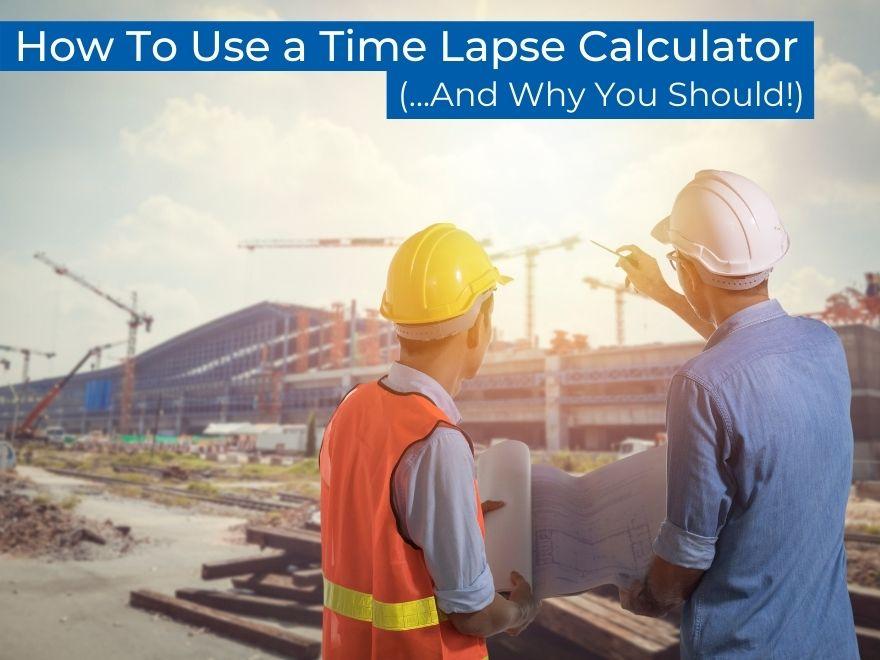As a construction site manager, you are likely well aware that there are a variety of benefits to implementing a time lapse camera system. These include:
- Being able to better track the progress of your team on jobs in order to ensure you are meeting deliverable deadlines.
- Providing a more intensive look at the site for security/safety compliance purposes.
- Better capturing the progress of your work on a site for your company records as well as providing stakeholders with updates.
However, like introducing any technology into your operations, there needs to be an appropriate plan in place on how to correctly and successfully deploy it. For time lapse photography, this means having a deep understanding of not only the purpose of your shoot, but also take into account a series of other variables that you need to plan for, like power source, shoot duration, SD card size, desired video length, and more. A time lapse calculator is essential for determining the appropriate settings, equipment, and workflow to ensure your project works as smoothly as possible.
What Does A Time Lapse Calculator Do?
As alluded to, a time lapse calculator helps construction site managers plan the needs they have for a time lapse project long before it starts. Thefirst stage of any time lapse construction shoot is planning, and everything done afterward is built on the result here. If you have an SD card that’s too small for the shoot, you could have large sections going uncaptured. If you don’t have an appropriate power source, the camera may fail for important parts of the construction process. With a time lapse calculator, you’ll have the information you need to make smart decisions in this early stage.
The best way to showcase how this works is to walk through the different variable calculations, using theCamDo time lapse calculator as a guide.
Clip Length
The final video clip length for time lapse photography is based on a number of different metrics, including:
- How long the shoot will be.
- How many hours per day the shoot will run.
- The time interval between shots or video clips.
All of these factors together help determine how many shots are taken, as well as the memory/power requirements that you will have to abide by. This may also require you to use added equipment, like ourUpBlink controller, if your interval is going to be longer than 60 seconds. And nearly all long term construction time lapse projects, this will be the case, as a 60-second interval will result in an incredibly long final video and far too many images
SD/Memory Requirements
With this information, you’ll know exactly how many frames or images are going to be captured over a given shoot. This will help you figure out the amount of memory that you need. There are a few factors that you need to consider here, like the complexity of a scene and compression parameters. This is why the average of a GoPro photo might be 5 MB, but you still want to take test shots of your own. Based on this information, you can either get a recommended size or determine how long your existing SD card will last. Best practices also include backing up the images and clearing the card often, no matter the size. This serves as a sort of built-in upkeep check to make sure the images are being captured and stored properly. And withCloudX Pro, you can conveniently handle this remotely.
Power
Understanding your power requirements is essential, particularly for long-term projects where you are going to need more than just a camera’s internal batteries. In addition, using a calculator here can help you schedule when to start and stop a shoot if you are using a controller. What you need to enter into the calculator includes:
- Camera type and mode.
- The camera’s internal battery.
- Whether or not you are uploading images to the cloud.
- How frequently you are uploading the images, if applicable.
For sites reliant on solar power, our calculator can also calculate the amount ofsolar energy available in your location based on where you are, the direction your solar panel faces, and whether or not it will be in the shade for part of the day. We can determine the amount of solar energy you will need to operate your camera so you can buy a panel accordingly.
Our time lapse calculator takes things to the next level by not only showcasing the metrics that you need to meet for your planned shoot, but also recommending accessories like batteries and SD cards based on those needs. This makes the calculator a crucial tool if you want to start putting this information into action right away.
A time lapse calculator can play a critical role in making sure that your composition and planning are adequate for the scope of your needs. In order to make this easier, you want to work with an industry partner that has all the tools you’ll need. AtCamDo, not only do we have handy tools like our own time lapse calculator, but you can also take a look at ourconstruction time lapse photography equipment and software to have all the support you need. Reach out to us today for more information.





